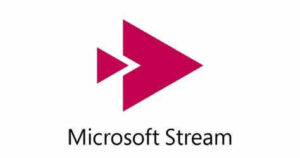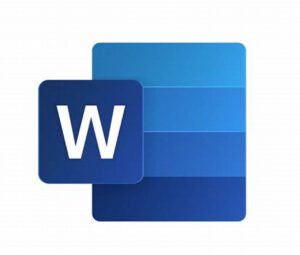Introduction:
Microsoft Stream is a video streaming service developed by Microsoft that allows users to upload, share, and view videos within their organization. It was launched in 2017 as a replacement for Office 365 Video, and since then, it has become a popular tool for companies to manage and share their video content. In this blog post, we will discuss the features, benefits, and drawbacks of Microsoft Stream, as well as its use cases and pricing plans.

Features:
Microsoft Stream has a variety of features that make it a powerful tool for organizations to manage their video content. Some of the key features of Microsoft Stream include:
- Secure Sharing: It allows users to share videos within their organization, ensuring that the content is only accessible to authorized users. This feature ensures that confidential content is not leaked to unauthorized parties.
- Searchable Content: It is powerful search functionality enables users to easily find and discover relevant content. The search function allows users to search for specific keywords, tags, and even spoken words within the video.
- Integration with Microsoft 365: It is integrated with Microsoft 365, making it easy for users to upload and share videos directly from their Microsoft applications, such as Teams and SharePoint.
- Auto Captioning and Translation: It automatically generates captions for videos, making them accessible to users with hearing impairments. Additionally, it can translate captions into multiple languages, making it easier for organizations to share their content globally.
- Video Analytics: It provides detailed analytics on video engagement, enabling organizations to understand how their content is being received by their audience. This information can be used to optimize future content and improve engagement.
Benefits:
There are several benefits to using Microsoft Stream for video content management. Some of the key benefits of using Microsoft Stream include:
- Centralized Video Management: It provides a centralized location for organizations to manage and store their video content, making it easier to organize and share videos with employees.
- Increased Collaboration: It enables employees to collaborate more effectively by sharing video content within the organization. This can improve knowledge sharing, communication, and productivity.
- Cost Savings: Microsoft Stream’s pricing plans are affordable and can save organizations money compared to other video content management systems.
- Improved Accessibility: Microsoft Stream’s auto-captioning and translation features make video content accessible to a wider audience, including users with hearing impairments and those who speak different languages.
- Powerful Analytics: Microsoft Stream’s video analytics provide detailed insights into engagement, allowing organizations to optimize their content and improve engagement rates.
Drawbacks:
While Microsoft Stream is a powerful tool for video content management, it does have some drawbacks. Some of the key drawbacks of Microsoft Stream include:
- Limited Customization: Microsoft Stream’s interface is relatively basic, and there are limited options for customizing the look and feel of the platform.
- Limited Storage: Microsoft Stream’s storage limits are relatively low, which can be a challenge for organizations with large amounts of video content.
- Restricted Access: Microsoft Stream is only available to organizations with a Microsoft 365 subscription, meaning that smaller organizations or those using alternative software may not be able to use the platform.
- Limited Sharing: While Microsoft Stream allows for secure sharing within an organization, it can be challenging to share videos with external parties who are not part of the organization.
Use Cases:
Microsoft Stream is used by a variety of organizations for a range of purposes. Some of the key use cases of Microsoft Stream include:
- Employee Training: Organizations can use Microsoft Stream to create and share training videos with their employees. This can improve knowledge retention and reduce training costs.
- Sales and Marketing: It can be used to create and share product videos, demos, and other marketing content. This can improve customer engagement and increase sales.
- Company Announcements: Microsoft Stream can be used to make company-wide announcements, such as changes in policies or procedures. Videos can be created and shared with all employees at once, ensuring that everyone is informed.
- Onboarding: Microsoft Stream can be used to create onboarding videos for new employees. These videos can provide an introduction to the company culture, policies, and procedures, as well as job-specific training.
- Event Streaming: Microsoft Stream can be used to stream live events, such as company meetings or webinars, to employees who are unable to attend in person. This can improve attendance and engagement.
- Internal Communications: It can be used for internal communications, such as team updates or project status reports. Videos can be created and shared within specific teams or departments, improving communication and collaboration.
- Knowledge Sharing: It can be used for knowledge sharing within an organization. Employees can create videos on topics related to their expertise, which can be shared with others who may benefit from their knowledge.
- Customer Support: It can be used to create support videos for customers. These videos can provide answers to common questions, as well as step-by-step instructions on how to use products or services.
Overall, It is a versatile platform that can be used for a wide range of purposes within an organization. By leveraging its features, organizations can improve communication, collaboration, and knowledge sharing, ultimately leading to increased productivity and success.
In conclusion:
Microsoft Stream is a powerful video streaming service that offers a range of features to organizations for managing and sharing their video content. Its integration with Microsoft 365, auto-captioning and translation, and powerful analytics make it a valuable tool for improving communication, collaboration, and knowledge sharing within an organization. While there are some drawbacks to the platform, such as limited customization and storage, its benefits, including cost savings and improved accessibility, make it a worthwhile investment for many organizations. With its diverse range of use cases, Microsoft Stream can help organizations increase productivity and ultimately achieve their goals.


